The Iyengar Yoga technique emphasizes precision and alignment which encourages moving with awareness. It utilizes props to help deepen your understanding of a posture or to learn the shape, action or direction and to allow students to progress in a safe way.
Props also facilitate movement and the breath. It is not uncommon to find some poses challenging and this is often indicated in our breath. Adding a prop, such as a bolster, chair or block will allow us to breath better and can aid in eliminating some of the tension in the brain.
For example, it is common to have the option to use a chair for a pose considering the individual’s range of motion, physical ability, personal history of injuries, and physical conditions. All students are accommodated in these classes.
Overtime, students learn to adapt and individualize the postures to their physical ability and learn to progressively build a stable foundation before attempting more challenging work such as inversions. Though inversions are an important part of the practice, they are only introduced after the student develops a strong foundation in the standing poses.
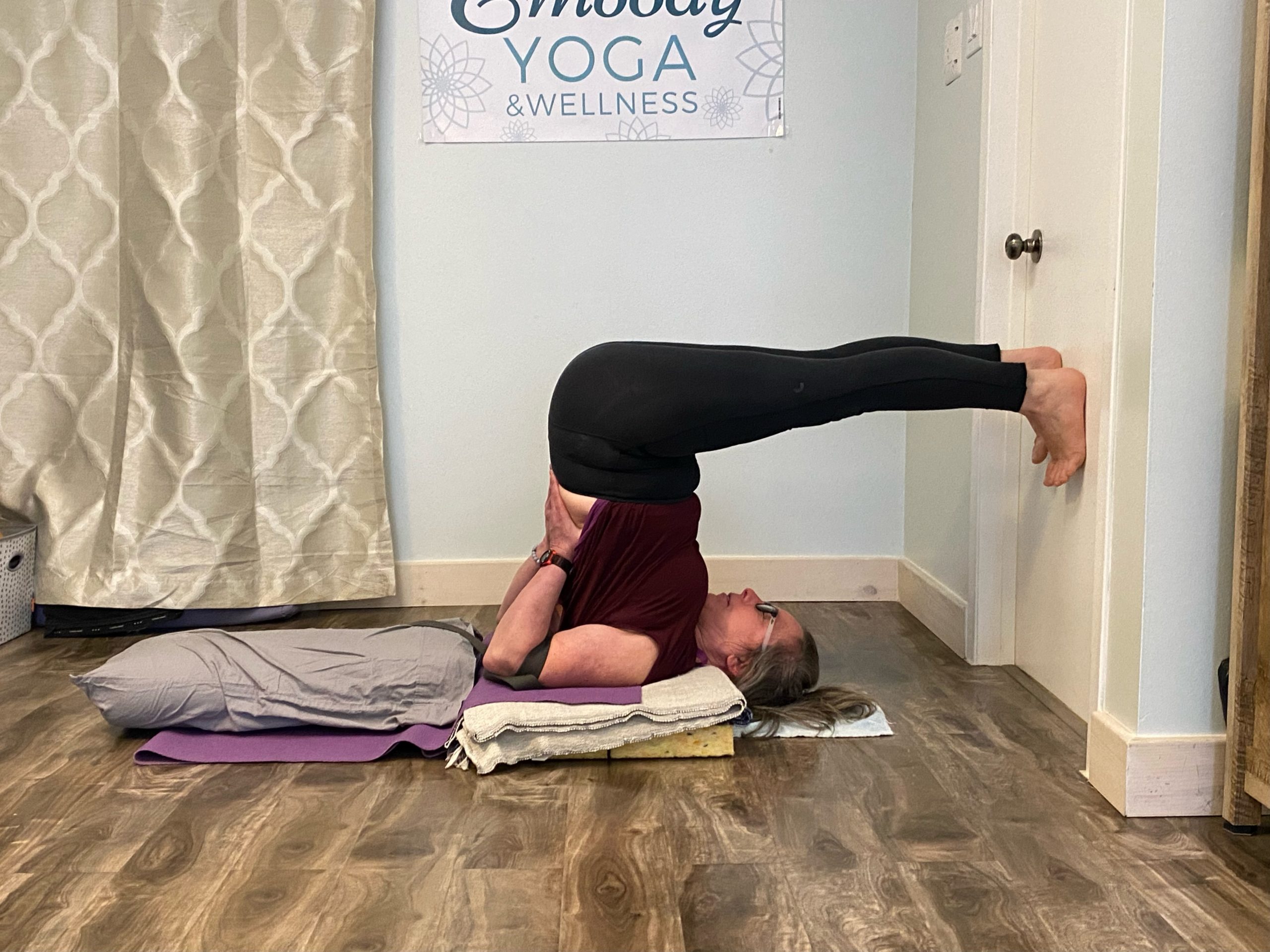
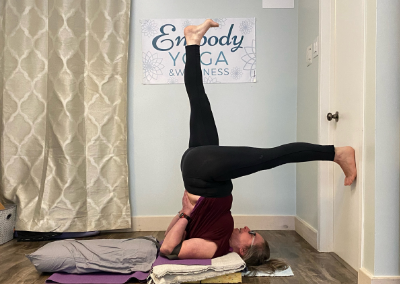
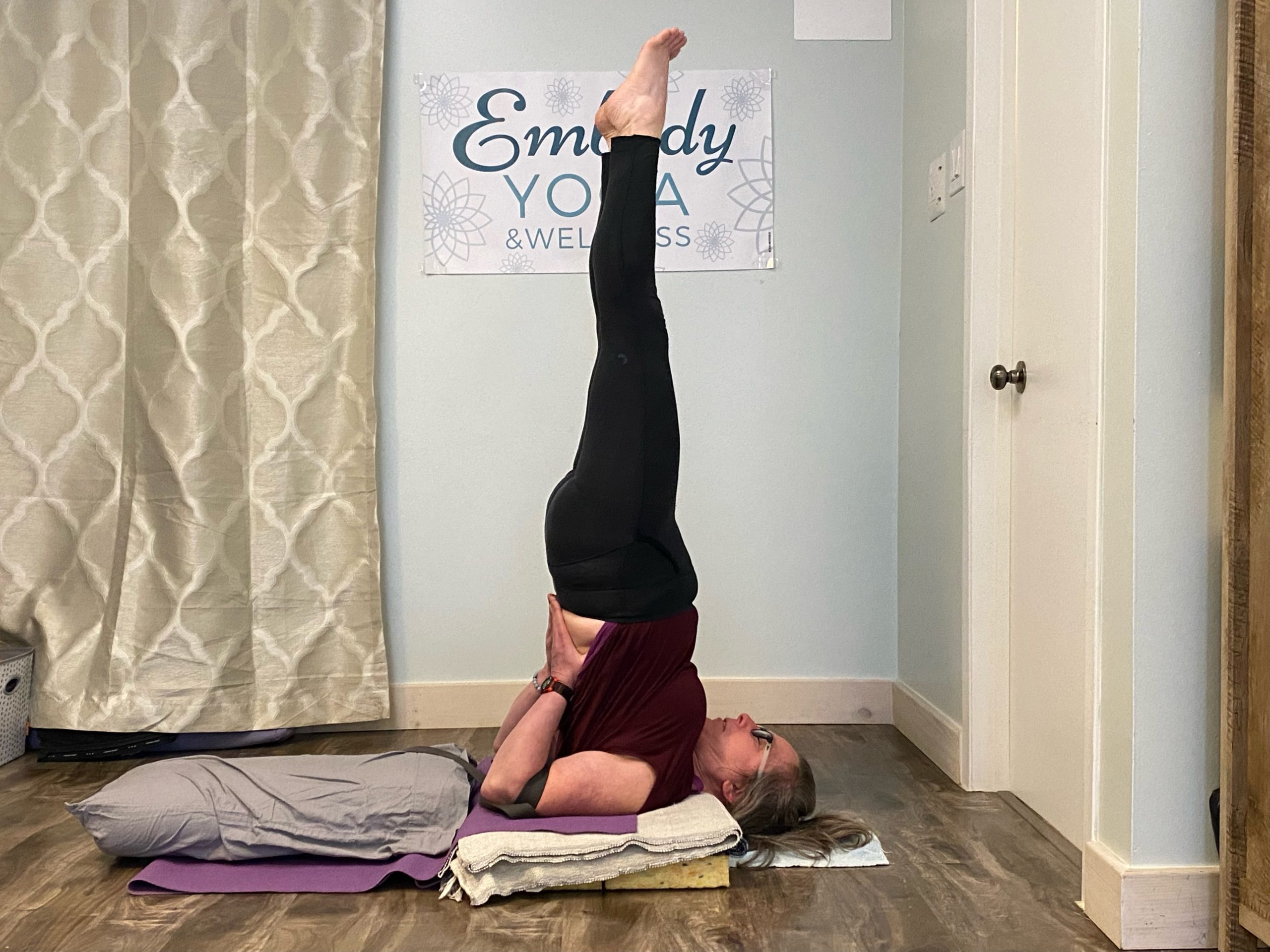
For example, in Ardha-Halasana (Half-Plow pose, first image) it is important for the spine and organic body to lift without tension in the neck muscles or nerves. This is why we use support under the shoulders as this provides space for the neck and enables us to stay longer in the pose to reap the maximum benefits. Halasana is quite a soothing and balancing pose for the body systems. It can help to reduce fatigue, insomnia, and anxiety. Gradually students can work towards Eka Pada Sarvangasana (one-legged shoulderstand, second image) and Salamba Sarvangasana (supported shoulderstand, third image).
Some students may never practice this type of full inversions (if they have severe neck issues) but can learn to adapt various poses to reap the benefits that inversions have on the body and the mind.
The sequences in each Iyengar Yoga class will cultivate your ability to concentrate, helping to develop clear and continuous attention, bringing consciousness to each and every part of the body in order to explore the effect of the mind on the body, and the body on the mind.
As students learn to extend awareness to each part of their body, they begin to explore the limitless potential of the mind as the mind is drawn inward, away from everyday distractions to a state of uninterrupted calmness.
Darla has over 500 hrs of YTT and is a certified Pilates Teacher. She is also an apprentice teacher of Iyengar Yoga. She is currently studying with Deborah Lomond of Yogaview in Tracadie, NS and completing her Level I certification, a 3-5 year commitment!
‘Fear and fatigue block the mind. Face both, then courage and confidence flows into you.’
-BKS Iyengar
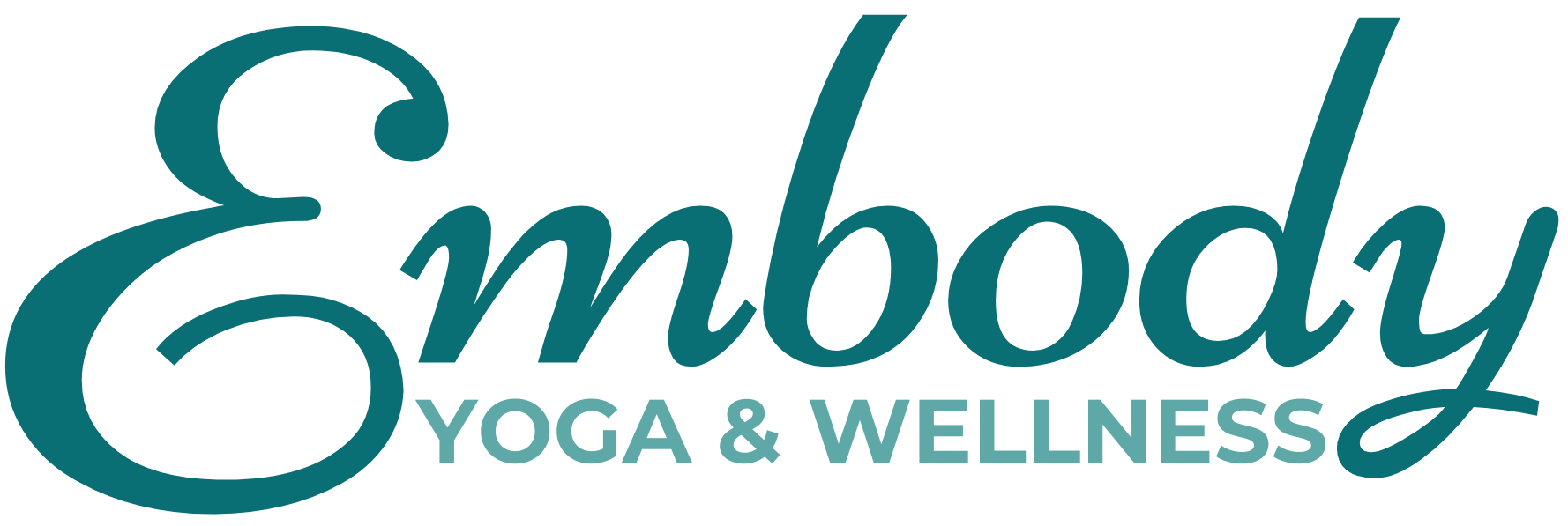
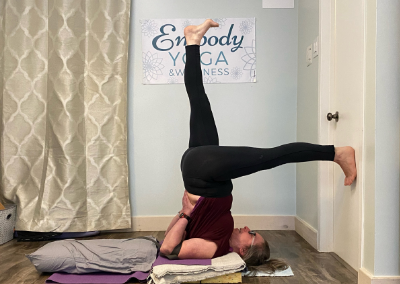
Hi Darla,
Is this where you are teaching? I have a student who will be visiting St. John’s next week. Her name is Heather. I suspect you may have already met her when you attended my classes at Dartmouth Yoga Centre.
If you are amenable to her dropping into your class, please send me details that I may forward to her.
Thank you!
Thanks for your comment! Just sent you an email with details.